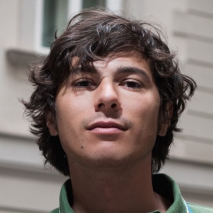


Patterns, an open access journal from Cell Press, published 'The hidden dimension of open science: ‘‘Peopleware’’', an article by Claudia Bauzer Medeiros that focuses on the concept of collaboration.
The article includes a section on 'The open science ecosystem' that refers to the 'IAP input into the UNESCO Open Science Recommendation' report:
The “open science ecosystem” of the InterAcademy Partnership Report,2 summarized in Figure 1, places global collaboration at its core. It depicts a virtuous cycle in which researchers share their work (separating the outputs themselves from the activities that lead to them) to enable cooperation through reuse, centered in a continuous exchange of research outputs and practices.
In this ecosystem, we recognize the most commonly cited pillars of open science, which can be summed up as hardware, software, and peopleware. The explicit digital component is restricted to the “E-infrastructure” component, involving hardware, software, networks, and repositories. Peopleware appears in all other components—e.g., as adopters of practices (such as the “design for openness”3), or facilitators, or as supported by enabling factors (with education, capacity building, adequate funding, and culture change).
A central focus of this ecosystem is the sharing of the outputs and the outputs themselves. One of these outputs—open publications—is often considered synonymous to open science and is at the center of an ongoing debate among scientists, publishers, and funders to establish new economic models for publishing “for free.” PlanS, for one, is an example of such a model, with its defenders and detractors. Open computational processes and open software, and the need for making them FAIR, represent a second important dimension of the ecosystem, as discussed in, for instance, the work of Katz et al.4
While the openness of publications and software (and the associated costs) are understood by researchers, data sharing—and open data in particular—are concepts whose realization are still in their infancy, with implementation, cultural, and political barriers. Perhaps one reason is that there are consensual understandings of what a publication is and how to share it. By the same token, the notion of software sharing through repositories is generically grasped by all who produce or consume research software. Incongruously, though everyone uses and produces data continuously, there are widely varying understandings of the concept of data. Consequently, data sharing is perhaps the biggest digital barrier in the open science ecosystem, not only because data is an asset and a commodity but also because many scientists are unsure of what kind of data they may share. While scientists in some domains (e.g., -omics) have a long tradition of data sharing, others (e.g., engineering) are unsure about how to proceed. This varies considerably across disciplines and geographic regions.
You can read the full article here.

